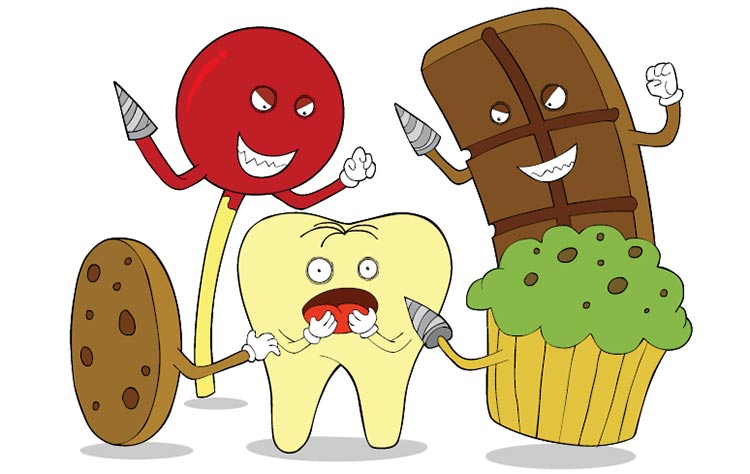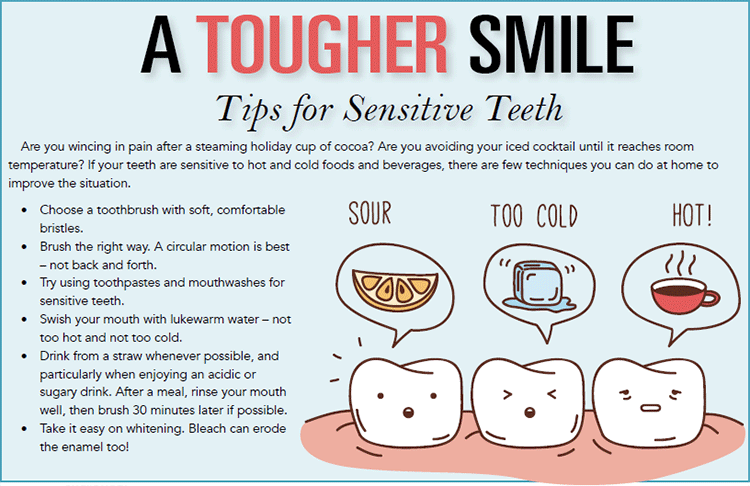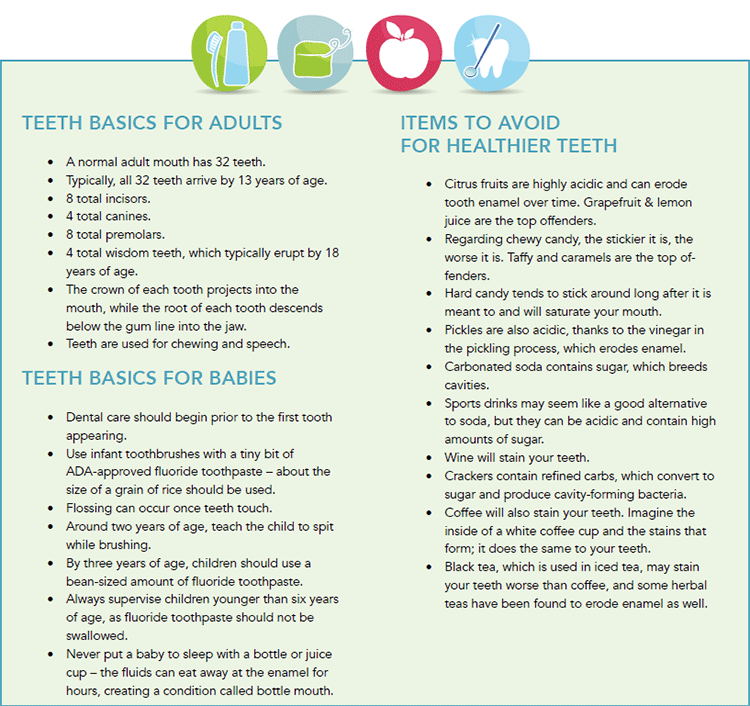
Candies, cakes and pies…oh my!
The final months of the year are upon us, and with them come sugary temptations that enrapture the young and old alike. Holiday candies and desserts will find their ways into homes across America.
Every culture and region has their favorite recipes – from fruit cake to dirt cake to empanadas, the selections are endless. As you and your family reap the benefits of holiday festivities, remember to do it in moderation and remember your teeth. You know – those pearly whites that give you the ability to smile, eat and speak? A little caution and maintenance will go a long way.
According to the Centers for Disease control and Prevention (CDC), tooth decay remains one of the most common diseases of childhood. More than 25 percent of 2- to 5-year-olds have one or more cavities, and half of kids 12 to 15 years old have one or more cavities. Meanwhile, tooth decay affects two-thirds of 16- to 19-year-olds.
When eating sweets and sour candies, a person should follow up with plenty of water to help rinse the mouth. Dairy has also been found to be beneficial to protect teeth, and, when at all possible, brush about an hour after consuming candy, which gives your mouth’s natural defenses a chance to work.
“Tooth decay is one of the most common childhood diseases,” said Dr. John Assey of Assey Dental Associates. “Trying to combat the number of processed foods and refined sugar, along with lack of appropriate hygiene, is a real problem. The food we have available to us is harder for our bodies to break down, which causes decay on our teeth.”
Without protective enamel, teeth are more prone to cavities, increased sensitivity to hot or cold food and beverages and discoloration.

Did you know that sour candy – a popular confection among children these days – is twice as harmful to your teeth as normal candy? It contains so much acid, it can actually dissolve tooth enamel directly on contact. Citrus fruits contain acid as well, and even though they can cause enamel damage, it is not to the same extent as sour candy.
“When dealing with sugar, I recommend brushing your teeth after a meal or using mouth rinse to help flush the debris out,” said Dr. Assey. “It is especially important to do this when consuming citrus fruits. They are acidic and attack enamel by breaking it down. Citrus fruits are the worst because they are part of a healthy diet, and people aren’t aware of the damage they are doing to their teeth.”
Did you know that sour candy – a popular confection among children these days – is twice as harmful to your teeth as normal candy?
“The problems we are seeing with teeth are tremendous due to power drink consumption,” Dr. Assey pointed out.
“Young children tell us they are drinking two a day, and these things are packed full of sugar. Parents feel these drinks are OK because they provide critical electrolytes, but it is best to avoid them and hydrate with water, or instead, consume drinks such as Powerade Zero or G2 because they do not have the sugar.”
Drinking water – specifically tap water – is beneficial to the teeth. Fluoride is known to help prevent and even reverse the early stages of tooth decay. The fluoride present in most tap water combats childhood tooth decay by delving into the structure of developing teeth and protecting the teeth when they come into contact with the surface of the gums.
For the past 60 years, additional fluoride has been added to community drinking water (amounts are determined by location). According to the CDC, in 2012, more than 60 percent of the population received fluoridated water through home water taps. The CDC considers community water fluoridation one of the 10 great public health achievements of the 20th century.
Parents should be aware that many bottled waters do not contain fluoride, although the market is changing. If fluoride has been added, the manufacturer is required to list the amount.
“Bottled water is just not held to the same standard as tap water,” explained Dr. Assey. “It is OK to alternate between the two, but this is why it is important to trust your dentist when they recommend a fluoride tray or rinse at the end of your visit. Some people just aren’t getting enough fluoride.”
Of course, routine visits to the dentist are extremely important. Cleanings and X-rays every six months are your best bet at early detection.
“Often, adults feel that if they brush their teeth several times throughout the day that they do not need to come in as often for cleanings, and this is untrue,” Dr. Assey remarked. “When you brush your teeth, you are only reaching about 60 percent of your surfaces. There are five surfaces for a single tooth, and in between the teeth is the danger area that is missed.







